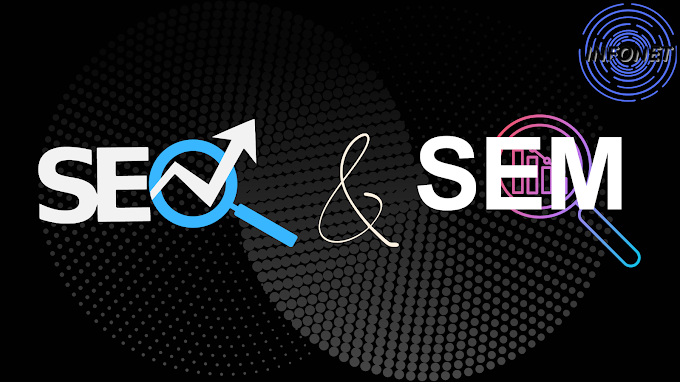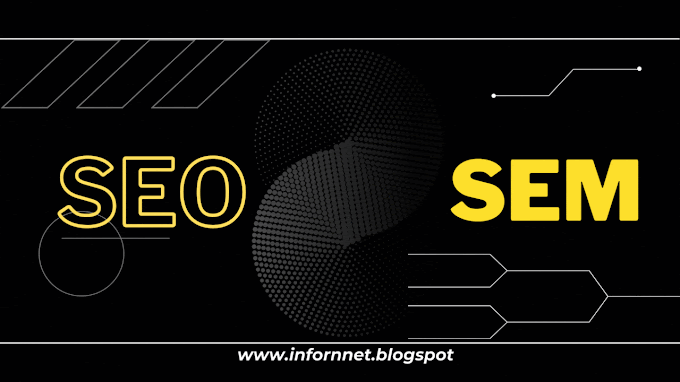In a digital age where online visibility can make or break a business, understanding the intricacies of search engine optimization (SEO) and search engine marketing (SEM) is essential. These two powerful tools play a key role in driving traffic to your website and improving your online presence. In this article, we'll explore the differences between SEO and SEM and help you make informed decisions about your online marketing strategy.
Content
- Introduction
- What is SEO?
- What is SEM?
- SEO vs. SEM: Key Differences
- Objective
- Costs
- Timing
- Longevity
- Visibility
- click through rate (CTR)
- Keyword selection
- When to use SEO
- When to use SEM
- SEO vs. SEM: Which is better?
- Conclusion
1. Introduction
In digital marketing, search engine optimization (SEO) and search engine marketing (SEM) are often used interchangeably, but they serve different purposes. SEO focuses on organic, unpaid traffic, while SEM includes paid advertising tactics such as pay-per-click (PPC). To better understand the differences between these two strategies, let's take a deeper dive into what each entails.
2. What is SEO?
SEO stands for Search Engine Optimization. It is a set of techniques and procedures aimed at improving the visibility of websites in search engines such as Google, Bing and Yahoo. SEO aims to place a website higher in organic (non-paid) search results so users click on it.
What does SEO mean?
SEO is a long-term strategy that involves optimizing various elements of a website, including content, meta tags, images, and more. It primarily focuses on increasing the authority and relevance of websites for specific keywords and phrases related to their niche.
3. What is SEM?
SEM stands for Search Engine Marketing. Unlike SEO, SEM includes both organic (unpaid) and paid marketing strategies to increase a website's visibility in search engines. The most common form of SEM is pay-per-click (PPC) advertising, where advertisers bid on keywords and pay when users click on their ads.
What does SEM mean?
SEM encompasses a wide range of activities, including PPC advertising, display advertising and other paid marketing methods. The primary goal of SEM is to bring immediate and targeted traffic to a website by placing ads at the top of search engine results pages (SERPs).
4. SEO vs. SEM: Key Differences
Let's take a closer look at the key differences between SEO and SEM in the following categories:
Objective
SEO: The primary goal of SEO is to increase organic (unpaid) traffic by improving a website's ranking in search engine results.
SEM: The primary goal of SEM is to increase website traffic through paid advertising, including PPC campaigns.
Costs
SEO: While SEO requires an initial investment, the ongoing costs are relatively lower. The costs mainly include content creation, website optimization and possibly hiring an SEO specialist.
SEM: SEM involves immediate costs as advertisers pay for each click on their ads. Budget can vary greatly depending on keyword competition and ad placement.
Timing
SEO: SEO is a long-term strategy that takes time to see significant results. It can take months or even years to achieve and maintain high organic rankings.
SEM: SEM brings immediate results. Once the campaign is launched, the ads appear in search results and generate traffic immediately.
Longevity
SEO: The results of SEO efforts are more sustainable in the long run. Once a website ranks well, it can maintain that position through ongoing optimization.
SEM: SEM results are temporary. Once you stop paying for ads, your visibility in search results will decrease.
Visibility
SEO: SEO results in organic listings that appear lower on the search results page. Users may perceive these results as more credible.
SEM: SEM results in paid listings that appear high in search results, making them highly visible to users.
click through rate (CTR)
SEO: Organic listings typically have a lower click-through rate (CTR) compared to paid listings because they are lower on the page.
SEM: Paid listings often have higher CTRs due to their prominent placement, but clicks can be expensive.
Keyword selection
SEO: SEO allows comprehensive keyword targeting, including long-tail keywords and general terms. Keyword optimization is an ongoing process.
SEM: SEM focuses on specific keywords that advertisers bid on. It requires constant monitoring and adjustment of keyword strategies.
5. When to use SEO
SEO is an ideal choice when:
You have a long-term vision for the success of your website.
You want to build organic credibility and trust.
Your budget is limited and you are willing to invest time in this process.
You are trying to target a wide range of keywords and phrases.
6. When to use SEM
SEM is a good choice when:
You need instant results and traffic.
You have a flexible budget for paid advertising.
You want to test the effectiveness of specific keywords or ad campaigns.
You want to precisely target a specific audience.
7. SEO vs. SEM: Which is better?
Determining whether SEO or SEM is better for your business depends on your specific goals, budget, and timeline. In many cases, a combination of both can achieve the best results. Here are some considerations to keep in mind:
Budget: If you are on a tight budget, it can be a prudent choice to start with SEO. As organic traffic to your website grows, you may consider allocating an SEM budget for faster results.
Longevity: If you are looking for long-term sustainability, SEO is essential. A well-optimized website can reduce your dependence on paid advertising over time.
Competition: Evaluate the competition in your industry. If your competitors are investing heavily in SEM, it may be necessary to supplement your SEO efforts with SEM to stay competitive.
Immediate Goals: If your primary goal is to increase sales, generate leads, or promote a time-sensitive offer, SEM can produce quick results.
8. Conclusion
In the world of online marketing, SEO and SEM are valuable tools, each with their own unique set of benefits and limitations. The key to a successful digital marketing campaign is understanding the differences between the two and knowing when to use each strategy. Ultimately, the choice between SEO and SEM should align with your business goals, budget, and timeline. Whether you opt for a long-term SEO approach or immediate SEM results, a well-planned and executed strategy can help you achieve online success.


.png)

.png)


